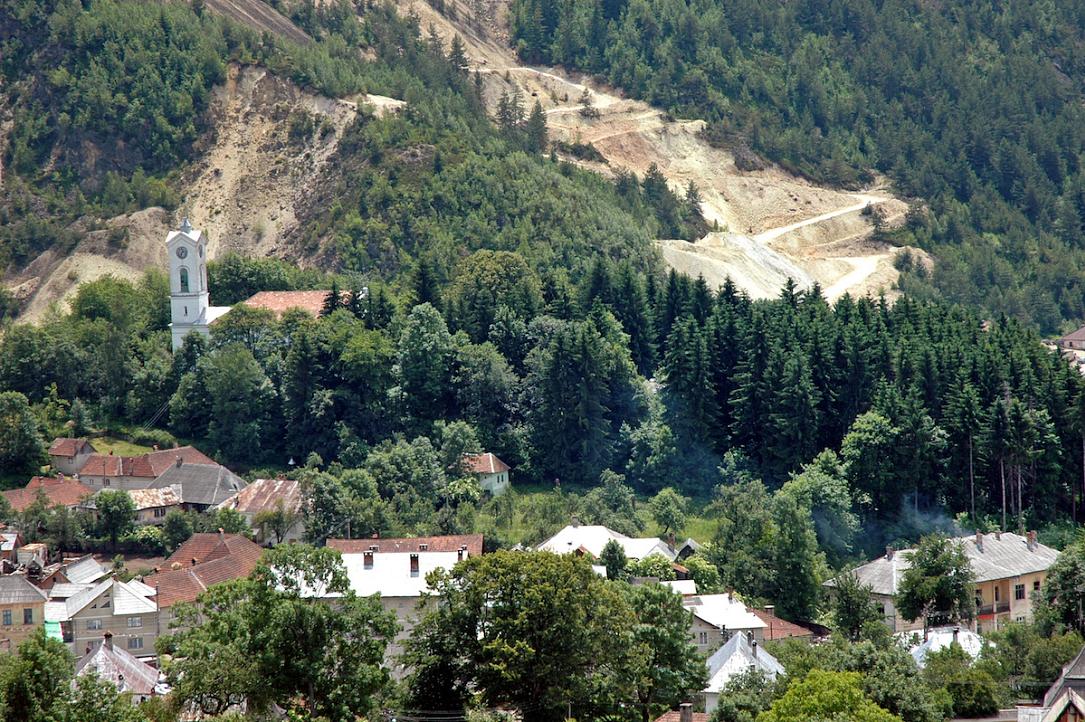UNESCO defers inclusion of Roșia Montană in World Heritage List after Romania's request



The World Heritage Committee has decided to defer the inclusion of the Roșia Montană mining site in the UNESCO World Heritage List.
The committee, which has been in session in Manama, Bahrain, since June 24, was due to discuss the Rosia Montană nomination on July 1 but the talks were postponed for one day.
The decision comes as Romania’s government requested “the deferral not the withdrawal of the file” until the lawsuit the country has with the Canadian mining company Gabriel Resources is settled, the Culture Ministry said.
In 1999, the Canadian company won a license to exploit the mining site at Roșia Montană. The Romanian state blocked the gold mining project following massive street protests in 2013 and the company took the case at the International Centre for Settlement of Investment Disputes (ICSID) in Washington. It asked for damages of USD 4.4 billion for the blocking of the mining project.
Romania sent the file for the inclusion of Roșia Montană in the UNESCO World Heritage List in 2017. This year, the International Council on Monuments and Sites (ICOMOS) recommended its inclusion on the list.
“We, the PSD – ALDE government, have not been and are not willing to pay out of the citizens’ pocket the over USD 4 billion that could be lost following the litigation,” George Ivaşcu, the culture minister, said.
In order for a site to be included on the World Heritage List, the consent of the state where the site is found is needed. The recordings of the July 2 debate concerning the Roşia Montană file can be watched here (starting 4:00:00).
At the debates, the delegation of Azerbaijan proposed an amendment that stipulates that the file “should be sent back to the Romanian state, given the issue of the international arbitration currently taking place.” According to the rules of the World Heritage Committee, when a file is referred back to a state for additional information it needs to be sent back to UNESCO within a maximum of three years. If this period expires, the file needs to be submitted again for a new bid.
Former culture minister Vlad Alexandrescu, currently a senator of the opposition party Save Romania Union (USR) called the deferral “the most shameful moment of Romania since it has been a member of UNESCO.”
“All the states were planning to vote for the inclusion, no one had anything to object. No one except Romania. The interests of a corporation and of a political class sold since 20 years before were more important than the national interest,” Alexandrescu said. He was present at the debates in Manama as a member of the UNESCO Commission of the Romanian Parliament.
Former prime minister Dacian Cioloş also argued that the government’s decision “deprives the area of a development and promotion instrument that is hard to equal.”
“In this way, the government turns Roşia Montană into a prisoner of a process that was initiated and complicated by those who make up the political majority today,” Cioloş wrote in a Facebook post.
At the same time, two deputies of the National Liberal Party (PNL) called the request to defer the inclusion of the site in the World Heritage List “an act of national treason.” PNL deputy Gigel Ştirbu, the president of the Culture and Arts Commission, said that the current government “embarrassed Romania at an international level,” News.ro reported.
Meanwhile, minister Ivașcu decried “the propagandistic treatment of the topic” both inside the country and at Manama and argued that it “should be treated with seriousness and patriotism.” “It is serious that former dignitaries of the Romanian state preferred to lobby other states against Romania’s interests,” he said.
At the meeting in Manama, set to end on July 4, several new sites have been added to the World Heritage List. They are: the Thimlich Ohinga archaeological site (Kenya); the Ancient City of Qalhat (Oman); the Al-Ahsa Oasis, an Evolving Cultural Landscape (Saudi Arabia); the Victorian Gothic and Art Deco Ensemble of Mumbai (India); the Sassanid Archaeological Landscape of Fars region (Islamic Republic of Iran); the Hidden Christian Sites in the Nagasaki Region (Japan); the Sansa, Buddhist Mountain Monasteries in Korea (Republic of Korea); the megalithic structures at Göbekli Tepe (Turkey); the Naumburg Cathedral (Germany); the forest landscape at Pimachiowin Aki (Canada); the Chiribiquete National Park – “The Maloca of the Jaguar” (Colombia); Ivrea, industrial city of the 20th century (Italy); the Caliphate City of Medina Azahara (Spain); the Tehuacán-Cuicatlán Valley: Habitat of Mesoamerica (Mexico); the Barberton Makhonjwa Mountains (South Africa); the Fanjingshan mountain range (China); and the Chaîne des Puys–Limagne fault tectonic area (France). An extension was granted for the Bikin River Valley [extension of Central Sikhote-Alin] (Russian Federation).
UNESCO postpones evaluation of Rosia Montana nomination for World Heritage List
Romania’s supreme defense council says Govt. must deal with Rosia Montana
(Photo: Adobe Stock)
editor@romania-insider.com